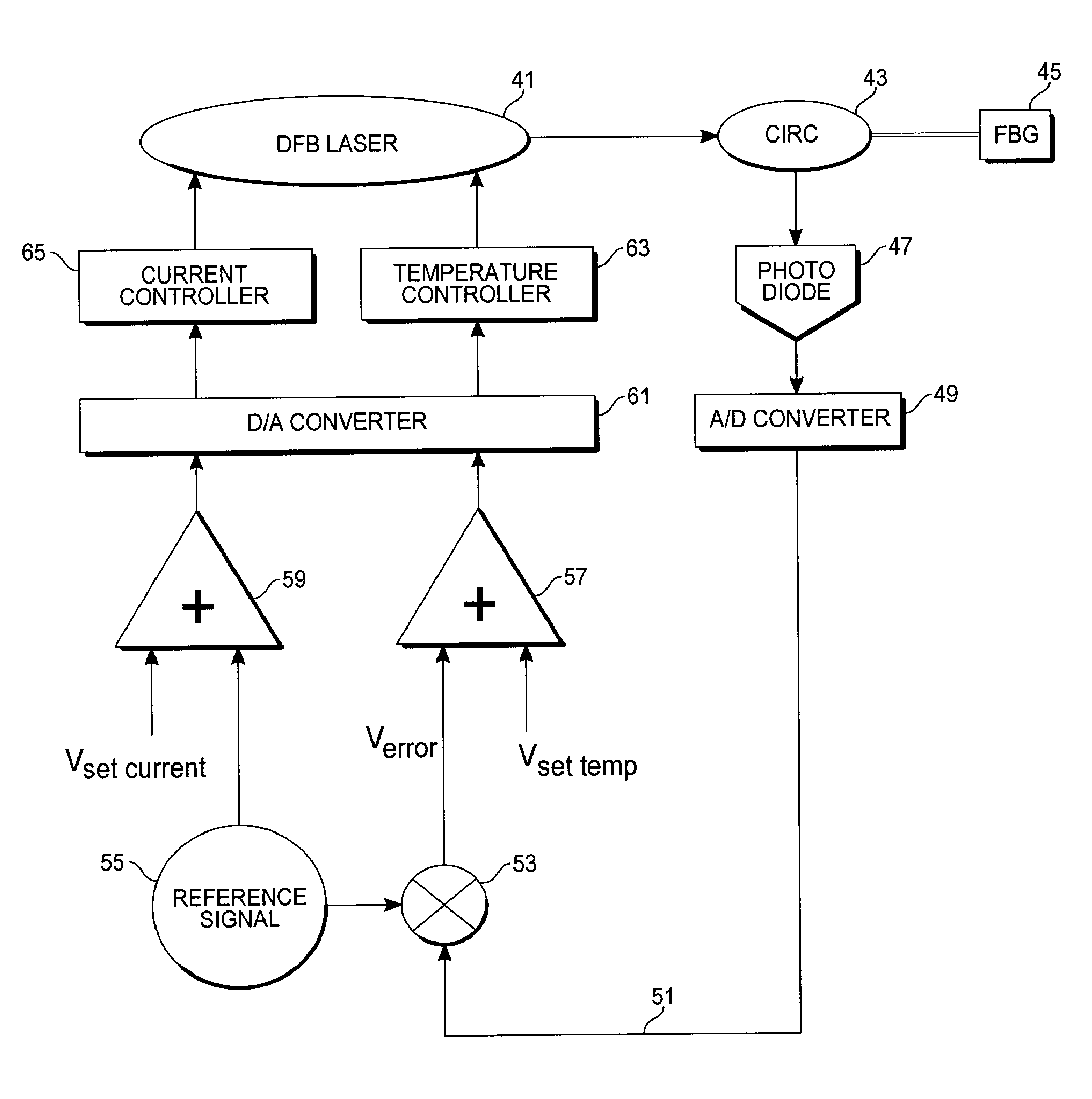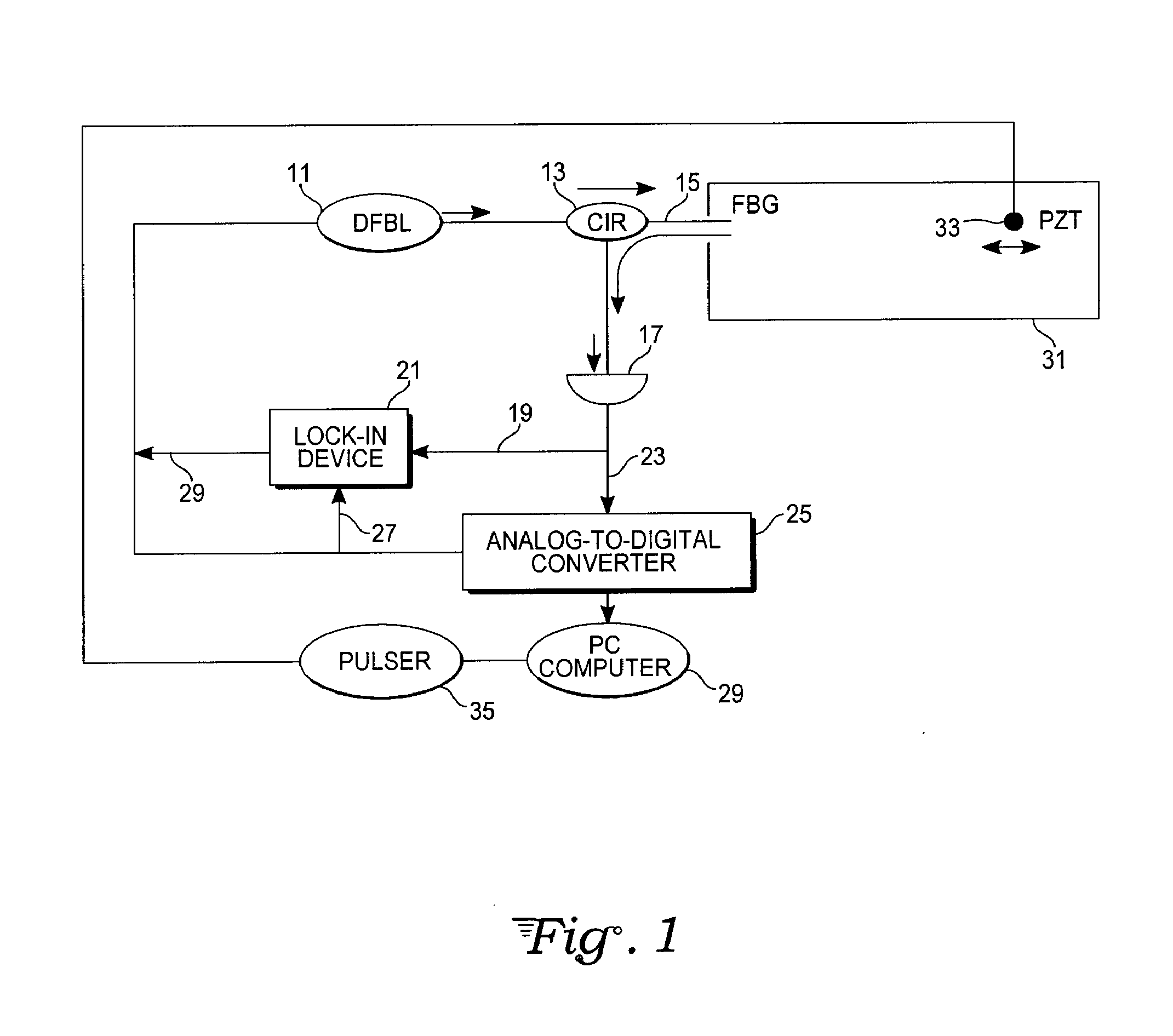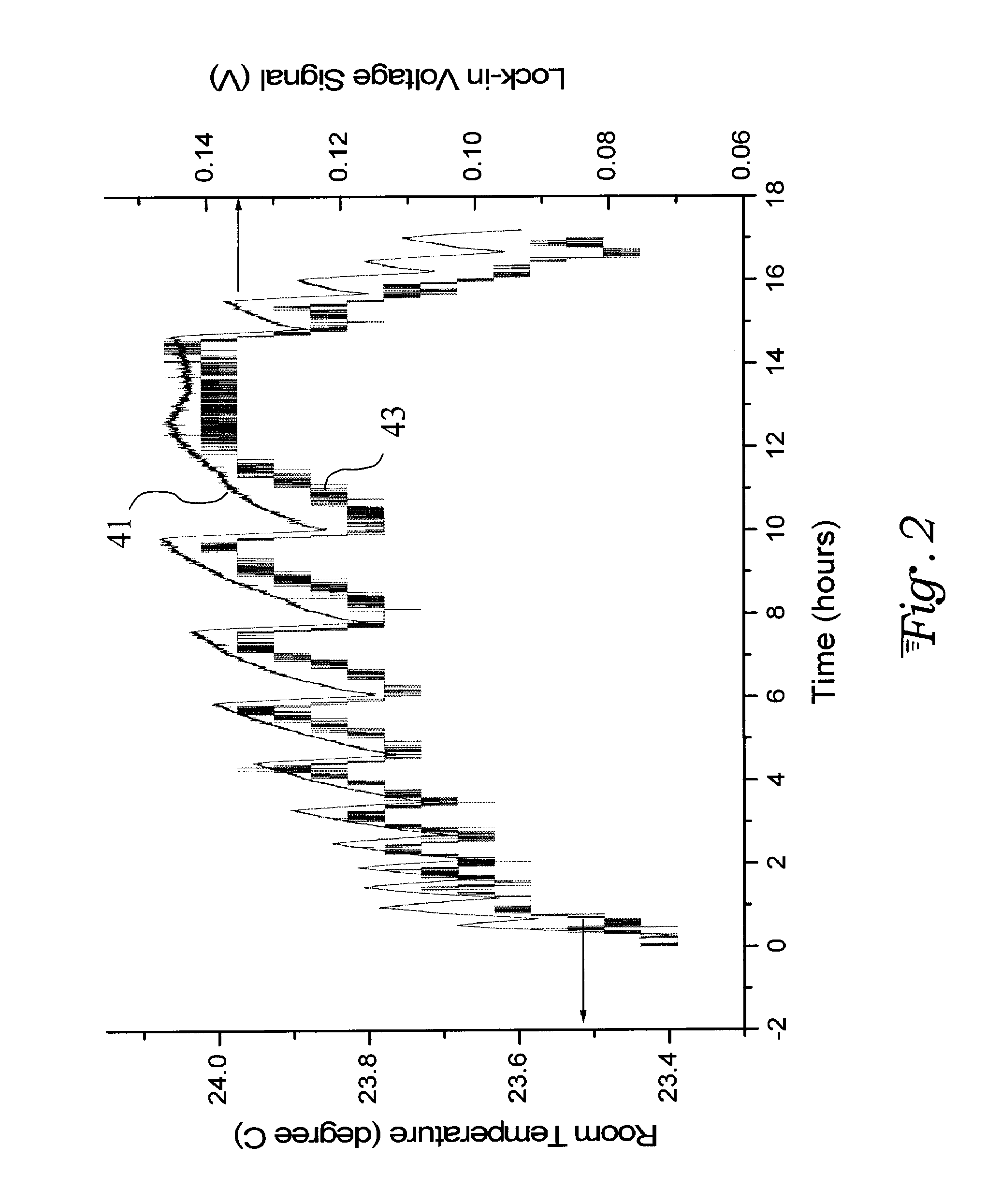Lock-in demodulation technique for optical interrogation of a grating sensor
a technology of optical interrogation and locking, applied in the field of optical measurement and, to achieve the effect of achieving both sensitivity and accuracy, stable laser wavelength locking, and effectively removing noise contribution
- Summary
- Abstract
- Description
- Claims
- Application Information
AI Technical Summary
Benefits of technology
Problems solved by technology
Method used
Image
Examples
Embodiment Construction
[0015]With reference to FIG. 1, feasibility of the laser lock-in based FBG interrogation technique of the present invention is demonstrated in the illustrated experimental setup by locking a commercial tunable distributed feedback (DFB) laser to a commercial FBG sensor to simultaneously obtain sub-microstrain resolution and high sensitivity ultrasonic wave detection with high reproducibility and stability over a period of time, from a few hours to a few weeks.
[0016]As seen in FIG. 1, a distributed feedback (DFB) tunable semiconductor laser 11 (with associated control electronics) is optically coupled to supply laser light to an FBG sensor 15 via a beamsplitter 13. Other wavelength tunable light sources or even broadband light sources could be used. Here the FBG sensor 15 is an optical fiber with a Bragg grating formed therein. The optical fiber material may be silica, fluorozirconate glass, a polymer, or any other material that is transparent at the wavelengths of interest and can s...
PUM
| Property | Measurement | Unit |
|---|---|---|
| intrinsic temperature sensitivity | aaaaa | aaaaa |
| wavelength | aaaaa | aaaaa |
| reflection | aaaaa | aaaaa |
Abstract
Description
Claims
Application Information
 Login to View More
Login to View More - R&D
- Intellectual Property
- Life Sciences
- Materials
- Tech Scout
- Unparalleled Data Quality
- Higher Quality Content
- 60% Fewer Hallucinations
Browse by: Latest US Patents, China's latest patents, Technical Efficacy Thesaurus, Application Domain, Technology Topic, Popular Technical Reports.
© 2025 PatSnap. All rights reserved.Legal|Privacy policy|Modern Slavery Act Transparency Statement|Sitemap|About US| Contact US: help@patsnap.com



